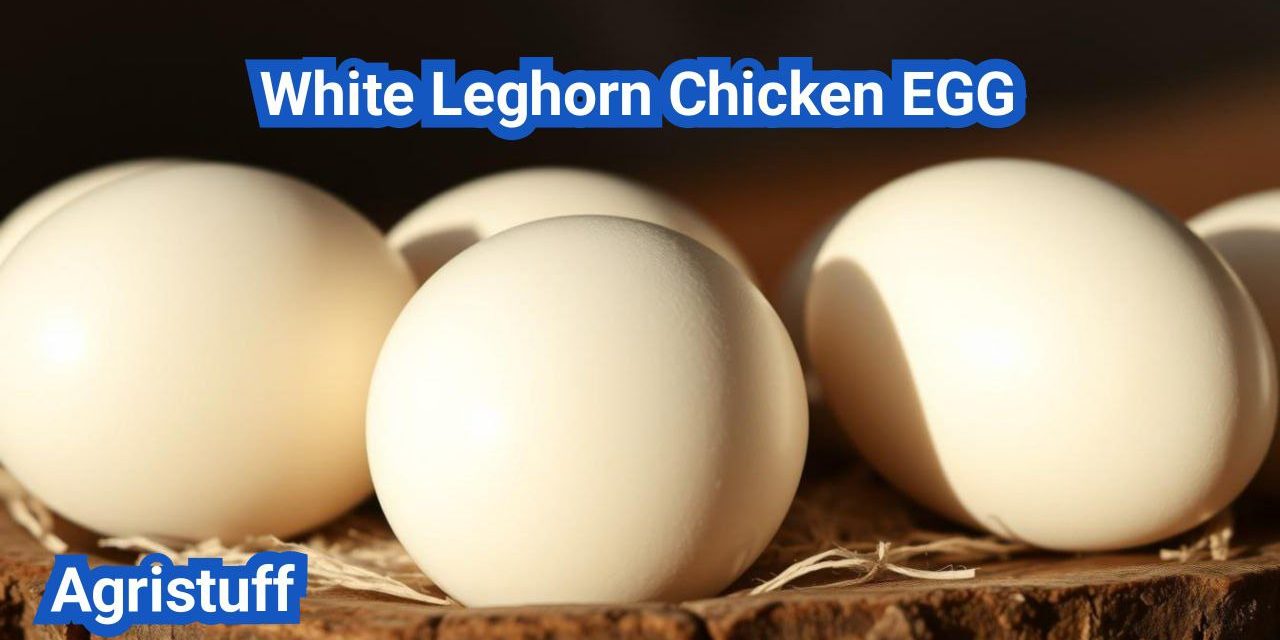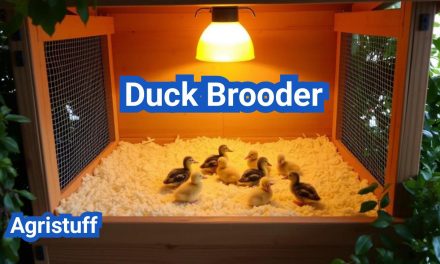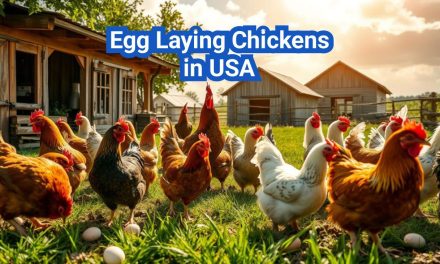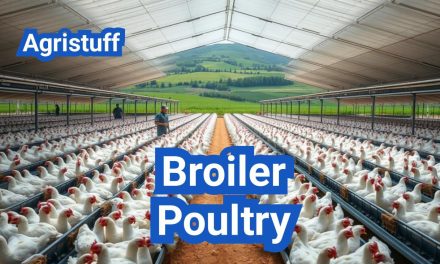The White Leghorn chicken is renowned for its exceptional egg-laying abilities, making it a favorite among backyard farmers and commercial producers alike. Originating from Italy, this breed was developed specifically for its high egg production.
Introduced to the United States, the breed quickly gained popularity due to its consistent laying of large white eggs. Their ability to produce a high volume of eggs, combined with their relatively low maintenance requirements, makes them an ideal choice for those looking to maximize egg production.
Key Takeaways
- Originated in Italy for high egg production.
- Gained popularity in the U.S. for consistent egg laying.
- Known for producing large white eggs.
- Ideal for maximizing egg production.
- Relatively low maintenance.
The Remarkable White Leghorn: America’s Premier Egg Layer
Known for their exceptional egg-laying abilities, White Leghorns have earned their place as America’s premier egg layer. Their popularity stems from a combination of their Mediterranean origins, adaptability to various farming conditions, and the high demand for their eggs.
Mediterranean Origins and American Adaptation
The White Leghorn chicken breed originated in the Mediterranean region, where they were bred for their egg-laying capabilities. As they were introduced to America, they adapted remarkably well to the new agricultural landscape. This adaptability, coupled with their prolific egg production, made them an attractive choice for American farmers.
Their ability to thrive in different environments is a testament to their hardiness. Over time, through selective breeding, American farmers have further enhanced the breed’s egg-laying capabilities, making them one of the most productive egg layers in the country.
Why Commercial Farms Choose White Leghorns
Commercial farms prefer White Leghorns for several key reasons:
- High Egg Production: White Leghorns are known for laying a large number of eggs annually, making them ideal for commercial egg production.
- Feed Efficiency: They have a high feed conversion rate, meaning they produce a significant number of eggs relative to the amount of feed they consume.
- Hardiness: Their robust health and ability to thrive in various conditions reduce the need for costly veterinary care and minimize losses due to illness.
These advantages make White Leghorns a cost-effective and efficient choice for commercial egg production.
Key Advantages for Backyard Flock Owners
Backyard flock owners also benefit from keeping White Leghorns:
- Ease of Care: They are relatively low maintenance, requiring less specialized care compared to some other breeds.
- Prolific Layers: Even in backyard settings, White Leghorns continue to lay a significant number of eggs, providing a steady supply for the household.
- Foraging Ability: They are active foragers, helping to control pest populations in the yard.
The combination of these traits makes White Leghorns an excellent choice for those looking to keep a small backyard flock.
White Leghorn Chicken Varieties and Characteristics

Diving into the world of White Leghorn chickens reveals a fascinating array of varieties, each with its own set of traits. The diversity within this breed makes them highly adaptable to various farming conditions.
Standard White Leghorn vs. Pearl White Leghorn
The Standard White Leghorn chicken and Pearl White Leghorn are two prominent varieties of the White Leghorn breed. While both are known for their high egg production, they differ in appearance.
- The Standard White Leghorn is characterized by its pure white plumage.
- The Pearl White Leghorn, on the other hand, has a lighter, pearl-like sheen to its feathers.
Both varieties are highly efficient egg producers, but the choice between them often comes down to personal preference or specific farm requirements.
Novogen White Leghorn Hybrids
Novogen White Leghorn hybrids are a result of selective breeding aimed at enhancing egg production. These hybrids are known for their:
- Exceptional laying ability, often producing over 300 eggs per year.
- Robust health, making them less susceptible to certain diseases.
- Efficient feed conversion, which is crucial for cost-effective farming.
Physical Traits and Size Expectations
White Leghorn chickens are generally known for their slender build and active nature. They typically weigh between 4 to 5 pounds, with roosters being slightly larger than hens.
| Characteristic | Hens | Roosters |
|---|---|---|
| Weight | 4 pounds | 4.5-5 pounds |
| Comb Type | Single comb | Single comb |
| Egg Color | White | N/A |
Understanding these physical traits and size expectations can help farmers and backyard poultry keepers make informed decisions about their flock.
How to Select Healthy White Leghorn Chickens
The key to successful White Leghorn chicken keeping lies in choosing birds that are healthy and vigorous. A healthy flock is not only more productive but also less prone to disease and stress-related issues.
Visual Indicators of Health and Vigor | White Leghorn Chicken
When selecting White Leghorn chickens, it’s crucial to look for visual indicators of health. These include:
- Bright, Alert Eyes: Avoid chickens with dull, sunken, or cloudy eyes.
- Clean Feathers: Feathers should be clean and free from excessive dirt or parasites.
- Active Behavior: Healthy chickens are active and move around freely.
- Good Body Condition: Look for chickens with a well-proportioned body and adequate weight.
According to poultry experts, “The health and productivity of your flock depend significantly on the initial quality of the birds you choose.”
A well-cared-for chicken is a happy chicken, and happy chickens lay more eggs.
Reputable Breeders and Hatcheries in the USA
Finding reputable breeders and hatcheries is vital for obtaining healthy White Leghorn chickens. Some well-regarded hatcheries in the USA include:
| Hatchery Name | Location | Specialty |
|---|---|---|
| Hy-Line International | Iowa | Commercial layers, including White Leghorns |
| Cal-Maine Foods, Inc. | Mississippi | Large-scale egg production, White Leghorns |
| Decoster Egg Farms | Iowa | Free-range and cage-free egg production |
Price Ranges and What to Expect | White Leghorn Chicken
The price of White Leghorn chickens can vary based on factors like age, quality, and location. Here’s what you can expect to pay:
- Pullets (16-20 weeks old): $3-$6 per bird
- Started Pullets (already laying): $5-$10 per bird
- Breeders or Show Quality: $10-$20 or more per bird
When purchasing, consider not just the initial cost but also the long-term value of healthy, productive birds.
Setting Up the Ideal Habitat for White Leghorns

A well-designed habitat is essential for the health and productivity of White Leghorn chickens. To ensure these prolific layers thrive, their living environment must be carefully planned and executed.
Coop Design and Space Requirements | White Leghorn Chicken
The coop is the heart of your White Leghorns’ habitat, providing shelter and protection from predators. When designing the coop, it’s crucial to consider space requirements. Generally, you should allow at least 3-4 square feet per bird inside the coop. Adequate ventilation is also vital to prevent respiratory issues, so incorporating windows or vents is a must.
Key considerations for coop design include:
- Predator-proofing to ensure the safety of your flock
- Easy cleaning access to maintain hygiene
- Adequate lighting, either natural or artificial, to support egg production
Essential Equipment for Egg Production
To maximize egg production, the right equipment is necessary. Nesting boxes are a critical component, with one box recommended per 3-4 hens. These should be designed to be comfortable and secure, encouraging hens to lay eggs in a clean environment.
Other essential equipment includes:
- Feeding systems that are easy to access and clean
- Watering systems that ensure constant access to fresh water
- Egg collection systems to simplify gathering eggs
Creating a Stress-Free Environment | White Leghorn Chicken
White Leghorns are known to be somewhat flighty, so creating a stress-free environment is crucial. This involves providing enough space for movement, both inside the coop and in the outdoor run. Enriching the environment with perches, dust baths, and foraging opportunities can also help reduce stress.
Tips for a stress-free environment:
- Ensure adequate space to reduce overcrowding
- Provide enrichment activities to keep hens engaged
- Maintain a clean and dry living area to prevent health issues
Step-by-Step Guide to Raising White Leghorn Pullets
To successfully raise White Leghorn pullets, it’s essential to understand their development milestones and environmental needs. Raising these birds requires careful planning, from setting up the brooding area to transitioning them to the laying coop.
Brooding Setup and Temperature Management
The brooding period is critical for the development of White Leghorn pullets. A well-designed brooding setup ensures the chicks are healthy and thrive. Start by providing a clean, dry, and draft-free brooding area. The temperature should be maintained at around 95°F during the first week. It’s crucial to use a reliable heat source, such as a heat lamp or a brooder heater, and to monitor the temperature closely.
Temperature management is vital during the brooding period. Gradually reduce the temperature by 5°F each week until it reaches around 70°F by the time the pullets are 6 weeks old. Ensure that the brooding area is well-ventilated to prevent the buildup of ammonia from the chickens’ droppings.
Week-by-Week Development Milestones | White Leghorn Chicken
Monitoring the week-by-week development of White Leghorn pullets is crucial for identifying any potential issues early on. During the first week, focus on ensuring the chicks are active, have bright eyes, and are free from any signs of illness.
- By week 2-3, the chicks should start to feather out, and their growth rate should be evident.
- By week 4-5, the pullets should be fully feathered and start to show signs of developing their adult plumage.
- By week 6 and beyond, the pullets will continue to grow, and their egg-laying capabilities will start to develop.
Regularly check the pullets for any signs of stress or disease, and ensure they have access to clean water and nutritious feed at all times.
Transitioning Pullets to the Laying Coop
As the pullets approach laying age (around 18-20 weeks), it’s time to transition them to the laying coop. Ensure the laying coop is well-ventilated, secure, and equipped with nesting boxes and perches. The transition should be done gradually to minimize stress.
Introduce the pullets to the laying coop during the day when they are most active. Provide enough space per bird to prevent overcrowding, and ensure they have access to adequate lighting, as White Leghorns require around 14 hours of light per day to maintain optimal egg production.
By following these steps and closely monitoring the development of your White Leghorn pullets, you can ensure they grow into healthy, productive layers.
Optimizing White Leghorn Egg Production

To get the most out of your White Leghorn flock, it’s crucial to understand the factors influencing their egg production. White Leghorns are renowned for their high egg-laying capacity, with some hens producing over 300 eggs annually.
When Do White Leghorns Start Laying Eggs?
White Leghorns typically begin laying eggs between 16 to 20 weeks of age. Factors such as nutrition, light exposure, and overall health can influence the onset of laying. Ensuring pullets receive adequate nutrients and are exposed to sufficient daylight hours can encourage earlier laying.
Nutritional Considerations: Providing a layer feed that is rich in calcium and protein is essential for supporting the development of strong eggshells and overall health.
Maximizing Annual Egg Yield
To maximize the annual egg yield of White Leghorns, several factors must be considered. These include providing a stress-free environment, ensuring access to fresh water and a balanced diet, and maintaining optimal coop conditions.
- Ensure adequate lighting: 14 hours of light per day is recommended for optimal laying.
- Maintain a clean and dry coop to reduce stress and disease.
- Monitor health: Regular checks can help identify any issues early.
According to poultry experts, “The key to high egg production is not just genetics, but also how well the flock is managed.”
“A well-managed flock can produce significantly more eggs than one that is not managed properly.” – Poultry Management Guide
Understanding White Egg Shell Quality
The quality of eggshells is crucial for the overall value of the eggs produced. Factors influencing eggshell quality include nutrition, age of the hen, and disease status.
| Factor | Influence on Eggshell Quality |
|---|---|
| Nutrition | Adequate calcium and vitamin D3 are crucial for strong shells. |
| Age of Hen | Younger hens tend to produce eggs with stronger shells. |
| Disease Status | Certain diseases can affect the quality of eggshells. |
By understanding and managing these factors, you can optimize the egg production of your White Leghorn flock, ensuring a high yield of quality eggs.
Feeding White Leghorns for Peak Performance

The nutritional needs of White Leghorns vary across different life stages, making it essential to tailor their feeding regimen accordingly. A well-balanced diet is crucial for maintaining their health and optimizing egg production.
Nutritional Requirements Through Different Life Stages
White Leghorns have distinct nutritional requirements at different stages of their life. During the starter phase (0-8 weeks), they require a diet rich in protein (around 20%) to support growth. As they mature into the grower phase (8-14 weeks), their protein requirements decrease to about 16%. For laying hens, a diet with 16-18% protein is recommended, along with adequate calcium for eggshell production.
Commercial vs. Homemade Feed Options
Farmers can choose between commercial and homemade feed options for their White Leghorns. Commercial feeds are formulated to meet the specific nutritional needs of chickens at various life stages. Homemade feeds, on the other hand, offer flexibility and can be tailored to the specific needs of the flock, but require careful formulation to ensure nutritional adequacy.
| Feed Type | Protein Content | Calcium Content | Advantages |
|---|---|---|---|
| Starter Feed | 20% | 1% | Supports rapid growth |
| Grower Feed | 16% | 1% | Promotes healthy development |
| Laying Feed | 16-18% | 3.5-4% | Optimizes egg production |
Supplements for Optimal Egg Quality
Supplements can be used to enhance egg quality and overall health of White Leghorns. Common supplements include calcium for stronger eggshells, omega-3 fatty acids for enriched eggs, and probiotics for gut health. It’s essential to use supplements judiciously to avoid over-supplementation.
By understanding and meeting the nutritional needs of White Leghorns, farmers can optimize their flock’s performance and egg production.
Managing White Leghorn Temperament and Behavior

Managing the temperament of White Leghorns involves understanding their natural behaviors and adapting their environment accordingly. This breed is known for its active and sometimes flighty nature, which can impact their stress levels and overall well-being.
Natural Behavioral Traits and Foraging Habits
White Leghorns are active foragers, naturally inclined to scratch and peck at the ground. This behavior is not only essential for their physical health but also for their mental well-being. Providing adequate space for foraging can significantly reduce stress and promote a healthy temperament.
Reducing Flightiness and Stress
To reduce flightiness and stress in White Leghorns, it’s crucial to provide a calm and secure environment. This can be achieved by ensuring their living space is spacious and well-ventilated. Regular handling from a young age can also help in reducing their skittishness.
Integration with Other Chicken Breeds
Integrating White Leghorns with other chicken breeds requires careful planning. It’s essential to introduce them gradually and under close supervision to prevent stress and aggression. The table below summarizes key considerations for integrating White Leghorns with other breeds.
| Consideration | Description | Benefit |
|---|---|---|
| Gradual Introduction | Introduce White Leghorns to other breeds gradually. | Reduces stress and aggression. |
| Supervision | Monitor interactions closely. | Prevents bullying and stress. |
| Space | Ensure adequate space for all birds. | Reduces competition and stress. |
By understanding and managing the temperament and behavior of White Leghorns, flock owners can create a harmonious and productive flock.
Health Management Throughout the White Leghorn Lifespan

Effective health management is key to maximizing the potential of White Leghorns. Maintaining their health is crucial not only for their productivity but also for their overall well-being and longevity.
Common Health Challenges and Prevention
White Leghorns are generally hardy birds, but they can be prone to certain health issues. Reproductive problems are among the common challenges faced by high-producing hens. Regular monitoring and maintaining a stress-free environment can help prevent many of these issues.
Another significant health concern is the presence of parasites, both internal and external. Regular checks and appropriate parasite control measures are essential to keep these under control.
Vaccination and Parasite Control Schedule
Implementing a proper vaccination schedule is vital to protect White Leghorns against diseases. Vaccinations should be administered according to a schedule recommended by a veterinarian, taking into account the flock’s specific needs and local disease prevalence.
For parasite control, regular inspections of the flock and their living conditions are necessary. This includes checking for mites, lice, and signs of internal parasites. A parasite control program should be tailored to the specific needs of the flock, considering factors like the time of year and the birds’ health status.
Extending Productive Lifespan
To extend the productive lifespan of White Leghorns, it’s essential to provide optimal living conditions, including a nutritious diet, adequate space, and a stress-free environment. Regular health checks and prompt intervention when health issues arise are also crucial.
By focusing on these aspects of health management, you can help ensure your White Leghorns remain healthy and productive for as long as possible, maximizing their egg production and overall value.
Seasonal Care for White Leghorns in Different US Climates

As the seasons change, so do the needs of White Leghorn chickens in different parts of the US. To keep your flock healthy and productive, it’s crucial to understand and adapt to these seasonal demands.
Summer Heat Management Strategies
White Leghorns can be sensitive to extreme heat, making summer care critical. Here are some strategies to manage heat stress:
- Ensure adequate ventilation in the coop to prevent heat buildup.
- Provide cool, shaded areas for your chickens to escape the direct sun.
- Use misting systems or fans to lower the temperature in the coop.
- Offer cool treats and ensure access to plenty of fresh, cool water.
According to poultry experts, “Heat stress can significantly reduce egg production and even lead to mortality if not managed properly.” Implementing these strategies can help mitigate the risks associated with high temperatures.
Winter Egg Production Techniques
Maintaining egg production during the colder months requires careful planning. Some techniques include:
- Ensuring the coop is well-insulated to keep the cold out.
- Providing a nutritious diet that supports egg production.
- Using supplemental lighting to extend the daylight hours, as White Leghorns need about 14 hours of light to maintain high egg production.
It’s also essential to monitor the health of your flock during winter, as cold stress can lead to health issues.
Lighting Programs for Consistent Laying
Lighting plays a crucial role in egg production. A well-designed lighting program can help maintain consistent laying throughout the year. Consider the following:
- Using LED lights, which are energy-efficient and produce less heat.
- Implementing a gradual lighting program that simulates natural daylight hours.
- Ensuring the lighting is evenly distributed throughout the coop.
Consistent egg production is key to getting the most out of your White Leghorns. By managing seasonal care effectively, you can enjoy a steady supply of eggs.
Commercial White Leghorn Management Practices
Effective commercial White Leghorn management is characterized by advanced housing systems, strategic flock rotation, and a focus on efficiency metrics. This comprehensive approach ensures that commercial egg production operations achieve optimal performance and profitability.
Housing Systems and Automation
Commercial White Leghorn farms utilize various housing systems, including cage and cage-free environments. The choice of housing system significantly impacts egg production efficiency and quality.
- Automated Feeding Systems: Enhance feed distribution efficiency and reduce labor costs.
- Climate-Controlled Environments: Maintain optimal temperature and humidity levels for improved hen health and productivity.
- Egg Collection Systems: Automate the collection process, reducing manual handling and potential egg damage.
Flock Rotation and Replacement Strategies
Flock rotation and replacement are critical for maintaining peak production levels. Strategies include:
- All-in, All-out System: Involves removing the entire flock at once, allowing for thorough cleaning and disinfection.
- Phased Replacement: Gradually replacing portions of the flock to maintain consistent production levels.
These strategies help in managing disease risks and maintaining the overall health of the flock.
Efficiency Metrics and Benchmarks
To evaluate the performance of commercial White Leghorn operations, several key efficiency metrics are monitored:
| Metric | Description | Benchmark |
|---|---|---|
| Hen-Housed Egg Production | Total eggs produced per hen housed | 280-300 eggs per year |
| Feed Conversion Ratio | Feed consumed per dozen eggs produced | 1.8-2.0 kg/dozen |
By focusing on these metrics and implementing effective housing and flock management strategies, commercial White Leghorn operations can achieve high levels of productivity and efficiency.
Comparing White Leghorns to Other Top Egg-Laying Breeds

Comparing White Leghorns to other top egg-laying breeds reveals significant differences in production efficiency. While White Leghorns are renowned for their high egg production, other breeds like Rhode Island Reds and Plymouth Rocks also offer impressive laying capabilities. Understanding these differences is crucial for both backyard flock owners and commercial producers.
Production Efficiency vs. Rhode Island Reds and Plymouth Rocks
White Leghorns are known for laying an average of 280-300 large white eggs per year. In comparison, Rhode Island Reds lay around 200-220 brown eggs annually, while Plymouth Rocks produce approximately 200-220 eggs per year. The production efficiency of White Leghorns is notably higher, making them a favorite among commercial egg producers.
Key differences in production efficiency include:
- Higher annual egg production
- Earlier onset of laying
- Consistency of production throughout the laying cycle
Feed Conversion Advantages
White Leghorns also excel in feed conversion efficiency, converting feed into eggs more effectively than many other breeds. This efficiency is a significant advantage for producers looking to minimize costs.
The feed conversion ratio (FCR) is a critical metric that measures how much feed is required to produce a dozen eggs. White Leghorns typically have a lower FCR compared to heavier breeds like Plymouth Rocks.
Lifespan and Long-Term Value
While White Leghorns have a high production efficiency, their lifespan and long-term value should also be considered. Generally, White Leghorns have a productive lifespan of about 12-18 months in commercial settings, although backyard birds can live much longer.
When comparing long-term value, factors such as longevity, egg size consistency, and overall health become important. Rhode Island Reds and Plymouth Rocks, while producing fewer eggs, may offer other benefits like hardiness and foraging ability.
Troubleshooting White Leghorn Egg Production Issues

Troubleshooting egg production in White Leghorns requires understanding the various factors that can impact their laying capabilities. White Leghorns are prolific layers, but their egg production can be influenced by several factors including nutrition, health, and management practices.
Identifying Causes of Production Decline
A decline in egg production can be caused by various factors. It’s essential to identify the root cause to implement corrective measures. Common causes include nutritional deficiencies, stress, and health issues.
- Nutritional deficiencies: Ensure that the diet is well-balanced and meets the nutritional requirements of laying hens.
- Stress: Minimize stress by providing a comfortable and safe environment.
- Health issues: Regularly monitor the health of your flock and address any health concerns promptly.
| Cause | Symptoms | Solution |
|---|---|---|
| Nutritional Deficiencies | Reduced egg production, poor egg quality | Adjust diet to include necessary nutrients |
| Stress | Reduced egg production, feather pecking | Improve environment, reduce stressors |
| Health Issues | Reduced egg production, illness symptoms | Consult a veterinarian, implement health measures |
Molting Management Techniques
Molting is a natural process in chickens where they shed and replace their feathers. It can significantly impact egg production. Effective molting management involves providing a nutritious diet and minimizing stress.
“Proper nutrition during molting is crucial. A diet rich in proteins and other essential nutrients can help support the molting process and minimize the impact on egg production.” – Poultry Nutrition Expert
To manage molting effectively:
- Provide a high-protein diet to support feather growth.
- Ensure access to fresh water at all times.
- Minimize stress by maintaining a calm and stable environment.
Resolving Egg Quality Problems
Egg quality can be affected by several factors, including nutrition, health, and management practices. Common egg quality issues include thin shells, misshapen eggs, and discoloration.
To resolve egg quality problems:
- Ensure a balanced diet that includes calcium and other essential nutrients.
- Maintain a clean and healthy environment to reduce the risk of disease.
- Monitor egg production and quality regularly.
By addressing these common issues and implementing effective management practices, you can optimize egg production and quality in your White Leghorn flock.
Economic Analysis of White Leghorn Ownership
Understanding the financial implications of White Leghorn ownership is crucial for maximizing returns. Whether you’re a commercial farmer or a backyard enthusiast, the economic benefits and costs associated with keeping White Leghorns can significantly impact your decision-making process.
Startup Costs Breakdown
The initial investment in White Leghorn chickens includes several key components. The cost of purchasing the chickens themselves is just the beginning.
- Purchasing chicks or pullets: $3 to $5 per bird
- Coop setup and equipment: $100 to $500
- Initial feed stock: $20 to $50
The total startup cost can range from a few hundred dollars for a small backyard flock to several thousand dollars for a commercial operation.
| Expense Category | Low-Cost Estimate | High-Cost Estimate |
|---|---|---|
| Chickens (per bird) | $3 | $5 |
| Coop and Equipment | $100 | $500 |
| Initial Feed | $20 | $50 |
| Total Startup Cost (for 10 birds) | $230 | $650 |
Ongoing Expenses vs. Egg Value
Ongoing expenses include feed, healthcare, and potentially, labor costs. The value of the eggs produced by White Leghorns can offset these expenses.
Average Annual Expenses per Hen:
- Feed: $15 to $25
- Healthcare and supplies: $5 to $10
Average Annual Egg Production: 280 to 300 eggs per hen
Calculating Your Return on Investment
To calculate the return on investment (ROI) for your White Leghorn flock, consider both the direct financial returns and the value of the eggs consumed or sold.
ROI Calculation:
- Determine total annual expenses.
- Calculate the total value of eggs produced.
- Subtract total expenses from total egg value to find net gain.
- Divide net gain by total investment (startup costs + annual expenses) to find ROI.
By carefully managing startup costs, ongoing expenses, and egg production, White Leghorn owners can achieve a positive return on investment.
White Leghorn Success Stories from American Farms
From small backyard flocks to large commercial operations, White Leghorns have proven to be a reliable choice for egg production. Many American farmers have achieved significant success with this breed, leveraging their high productivity and adaptability.
Small-Scale Backyard Success Cases
For backyard enthusiasts, White Leghorns offer a low-maintenance and high-reward option. Their ability to thrive in smaller spaces with minimal care makes them an ideal choice for urban and suburban farmers alike.
Key Benefits for Backyard Flocks:
- High egg production rates
- Adaptability to various climates
- Minimal feed requirements
One backyard farmer reported that her White Leghorns produced over 280 eggs per year, significantly exceeding her expectations.
Commercial Farm Productivity Reports
Commercial farms have also seen substantial benefits from incorporating White Leghorns into their operations. Their efficiency in converting feed into eggs makes them a cost-effective choice for large-scale egg production.
| Farm Size | Annual Egg Production | Feed Conversion Ratio |
|---|---|---|
| Small (100 hens) | 28,000 eggs | 2.0 |
| Medium (1,000 hens) | 280,000 eggs | 2.1 |
| Large (10,000 hens) | 2,800,000 eggs | 2.2 |
A commercial farm in California reported a 15% increase in egg production after switching to White Leghorns, citing their breed’s superior laying capabilities and hardiness.
The success stories from both small-scale backyard flocks and large commercial farms underscore the versatility and productivity of White Leghorns. As more farmers discover the benefits of this breed, its popularity is likely to continue growing.
Making the White Leghorn Work for Your Situation
White Leghorns have proven to be a versatile breed, thriving in various farm settings with proper management. Their exceptional egg production capabilities make them an attractive choice for both commercial and backyard farmers.
Effective farm management is crucial to maximizing the benefits of White Leghorns. By understanding their nutritional requirements, behavioral traits, and health needs, farmers can optimize egg production and maintain a healthy flock.
The adaptability of White Leghorns to different climates and management systems makes them a valuable asset for farmers across the United States. Whether you’re a seasoned commercial farmer or a beginner in backyard poultry keeping, White Leghorns can be a rewarding addition to your operation.
By implementing the strategies outlined in this article, farmers can unlock the full potential of their White Leghorn flock, enjoying a bountiful supply of high-quality eggs while maintaining a sustainable and efficient farm management system.
FAQ
What is the average lifespan of a White Leghorn chicken?
The average lifespan of a White Leghorn chicken is around 5-7 years, although some have been known to live longer with proper care and management.
How many eggs do White Leghorns lay per year?
White Leghorns are prolific egg layers, producing around 280-300 large white eggs per year, making them one of the most productive egg-laying breeds.
What are the ideal conditions for raising White Leghorns?
White Leghorns thrive in well-ventilated, dry environments with adequate space, proper nutrition, and regular health checks, making them suitable for both backyard and commercial farming.
How do I identify a healthy White Leghorn chicken?
A healthy White Leghorn chicken should have bright, alert eyes, clean feathers, and be active, with no signs of labored breathing or lethargy, indicating overall good health and vigor.
What are the benefits of raising White Leghorns in a backyard flock?
Raising White Leghorns in a backyard flock provides a steady supply of fresh eggs, is relatively low maintenance, and can be a fun and educational experience for the whole family.
Can White Leghorns be integrated with other chicken breeds?
Yes, White Leghorns can be integrated with other chicken breeds, but it’s essential to introduce them slowly and under close supervision to prevent stress and ensure a harmonious flock.
How do I manage the molting process in White Leghorns?
Managing the molting process in White Leghorns involves providing a nutritious diet, ensuring access to plenty of water, and minimizing stress to help them recover and resume egg production.
What are the most common health challenges faced by White Leghorns?
Common health challenges faced by White Leghorns include respiratory issues, parasites, and reproductive problems, which can be mitigated with proper care, vaccination, and regular health checks.
How can I optimize egg production in my White Leghorn flock?
Optimizing egg production in White Leghorns involves providing a balanced diet, ensuring adequate lighting, maintaining a stress-free environment, and monitoring health to maximize their laying potential.
What is the economic viability of raising White Leghorns for eggs?
Raising White Leghorns for eggs can be economically viable, as they produce a high volume of eggs, and with proper management, the return on investment can be substantial, making them a profitable choice for both small-scale and commercial egg producers.
Conclusion of: White Leghorn Chicken
The White Leghorn Chicken is widely recognised as one of the top egg-producer breeds globally. In the United States and beyond, White Leghorn Chickens are favoured on both commercial farms and modest backyard operations for their large output of consistently white eggs. A typical healthy White Leghorn Chicken will lay between 280 and 320 eggs in a single year, and exceptional hens have even broken world records—one laying 371 eggs in just 364 days. Learn more about their egg-laying capabilities from the USDA’s poultry research.
History and Origin
The breed now celebrated as the White Leghorn Chicken traces back to Tuscany, Italy—exported from the Tuscan port of Livorno to North America around the late 1820s, initially under names like “Italians”. By the mid-1860s, poultry fanciers in Worcester, Massachusetts began referring to them as White Leghorn Chicken lines. Exported subsequently to Britain in the 1870s, the White Leghorn Chicken became widely used by commercial breeders. These birds were prized for refined size, early maturity, and prolific laying, leading to creation of industrial hybrids based on White Leghorn Chicken genetics for maximum egg yield. Explore their historical impact in poultry farming at Purdue University’s Animal Sciences Department.
Physical Traits and Lifespan
A typical White Leghorn Chicken hen weighs about 2.0 to 2.5 kg (4.4–5.5 lb), while roosters weigh slightly more. White skin, bright yellow legs, red combs, and white earlobes are characteristic. Most White Leghorn Chicken strains carry a single comb, while rose-combed varieties exist but are less common and often valued for cold resistance. The White Leghorn Chicken’s slim physique and lightweight frame make it a poor meat bird but an exceptional layer. With good care, a White Leghorn Chicken can live 5–7 years, though its peak output typically occurs in the first two years. For more on breed standards, visit the American Poultry Association.
Egg Production Performance
The White Leghorn Chicken is celebrated for its outstanding egg-laying ability. On average, a White Leghorn Chicken will produce 280 eggs per year, and top-tier birds reach 300–320 eggs under optimal conditions. In fact, the world record stands at 371 eggs by a single White Leghorn Chicken, established under controlled conditions, reinforcing its reputation for high productivity. Shells are large, predominantly white (often 55–60 g per egg), with consistency in size through the flock’s early laying period. The University of Georgia’s Poultry Science Department provides further insights into maximizing egg production.
Why White Leghorn Chicken Tops Egg Layers
When commercial egg producers in the USA select for high-yield white-shelled eggs, the White Leghorn Chicken or its hybrids are the default choice. Their physiology is tuned for egg output with minimal feed; they start laying early (18–20 weeks), maintain steady rates through the first two years, and seldom brood, allowing more days for laying. The White Leghorn Chicken’s combination of early maturity, feed efficiency, and persistency sets it apart from most conventional chicken breeds. The Penn State Extension Poultry Resources offers detailed guides on breed comparisons.
Nutrition and Feeding Essentials
A properly nourished White Leghorn Chicken requires a formulated diet: for pullets, start with 16‑18% protein starter crumble, moving to a grower and developer feed before onset of lay; once eggs begin, transition to a layer feed with 16–18% protein and added calcium (approx. 3.5–4.0%) for strong shell formation. For White Leghorn Chicken, introduction to coarse limestone or oyster shell in the pre‑lay diet (starting at 15 weeks) helps build medullary bone reserves essential for eggshell production—which should continue through peak lay with at least 50% large‑particle calcium sources. The Iowa State University Poultry Extension provides feeding guidelines for optimal health.
Housing, Lighting, and Management
To support high production from your White Leghorn Chicken flock, ensure at least 1.5 ft² (0.14 m²) per bird in the coop, and 2–4 ft² run space if enclosed, while allowing for free-range roaming if possible. Good ventilation, dry litter, and consistent cleaning reduce stress and disease risk. Lighting is a critical factor: provide 14–16 hours of light per day during peak laying, ideally using a lighting program to mimic dawn and dusk to encourage consistent ovulation and nest use—which keeps a White Leghorn Chicken laying even in darker months. The University of Kentucky’s Poultry Research covers best practices for coop management.
Health and Behavioural Traits
The White Leghorn Chicken is active, alert, and known for its foraging prowess. Their flighty temperaments leave them less suited for petting, but ideal for free-range systems where they excel at pest control and finding supplemental greens. Large single combs can be susceptible to frostbite in cold climates; applying petroleum jelly during winter months helps reduce risk. Regular health checks should include parasite control and foot inspection, especially since White Leghorn Chicken hens are often active, navigating runs and perches. The CDC’s Healthy Pets, Healthy People offers tips on poultry health.
Pros and Cons of White Leghorn Chicken in the Backyard
Pros for keeping White Leghorn Chicken include excellent egg production, low feed requirements due to foraging, early maturity, and limited broodiness. They integrate well into mixed flocks and are resilient in many climates—even hot areas, thanks to minimal feathering and large combs that aid cooling. One key con is temperament: White Leghorn Chicken birds tend to be skittish, flighty, and sometimes challenging to fence or catch. They also do not gain much weight, making them mediocre as meat birds. Additionally, their high metabolic rate may result in weight loss during stress unless calorie-rich feed is available. For a balanced perspective, see The Livestock Conservancy.
Tips for Raising White Leghorn Chicken Successfully
Start White Leghorn Chicken chicks under intermittent lighting (20 h light / 4 h dark) in their first week, then gradually reduce light intensity by 4 weeks to mimic production shed conditions, improving feed intake and adaptation. Aim for uniform pullet body weight (±10%) by 16 weeks to ensure flock responds evenly to light stimulation and peak diets. Ideal target: ~2.8 lb at light stimulation onset for mature production in White Leghorn Chicken flocks.
Protect White Leghorn Chicken hens during molt by providing extra bedding and calcium supplements to mitigate drop in egg output. Maintain good ventilation and reduce stress factors like predators and noise. Collect eggs twice daily in nest boxes designed for their size; White Leghorn Chicken hens are not broody, so nests remain active year-round. The Mississippi State University Extension offers expert rearing advice.
Comparing White Leghorn Chicken to Other Layer Breeds
Compared to heritage breeds like Orpingtons, Sussex, or Rhode Island Reds, the White Leghorn Chicken outshines them in pure egg output but less so in broodiness or cold tolerance. Compared to hybrid breeds (Isa Brown, Hy‑Line), White Leghorn Chicken as purebreds may lay slightly fewer eggs but offer genetic access for crossbreeding or showing. Their lean frame and lower feed-to-egg conversion make them cost-effective layers, though hybrids often edge ahead by a handful of eggs per year under industrial regimes. For breed comparisons, visit The Poultry Site.
Economic and Commercial Considerations
For USA‑based farmers interested in commercial egg production, the White Leghorn Chicken remains the backbone of most white‑egg hybrid layers. Its efficiency—high output per unit of input—makes it ideal for large‑scale systems, whether cage‑free or conventional. The breed’s adaptability to varied housing systems, from enriched cages to aviaries and pasture, means White Leghorn Chicken genetics remain vital to the industrial egg sector. The US Poultry & Egg Association provides industry insights.
Sustainability and Backyard Appeal
If sustainability or reduced feed costs are important, raising White Leghorn Chicken in free‑range setups yields strong results. Their foraging behaviour contributes to pest reduction and less reliance on commercial feed. Many smallholders and homesteaders in the USA choose White Leghorn Chicken for a reliable renewable egg supply and impressive return on minimal space and care. Good biosecurity and rotational grazing further enhance their health and egg quality. Learn sustainable practices from ATTRA Sustainable Agriculture.
Final Thought
The White Leghorn Chicken is more than just an egg machine—it’s a cornerstone breed that shaped modern poultry farming. With centuries of selective breeding for egg production, White Leghorn Chicken lines still offer unmatched output for both hobbyists and producers. Whether managed in a backyard coop or large-scale aviary system, the White Leghorn Chicken brings efficiency, reliability, and economic value. Proper nutrition, housing, lighting, and health management ensure longevity of productivity—even after the commercial peak phase has passed. For further reading, explore The National Agricultural Library.










